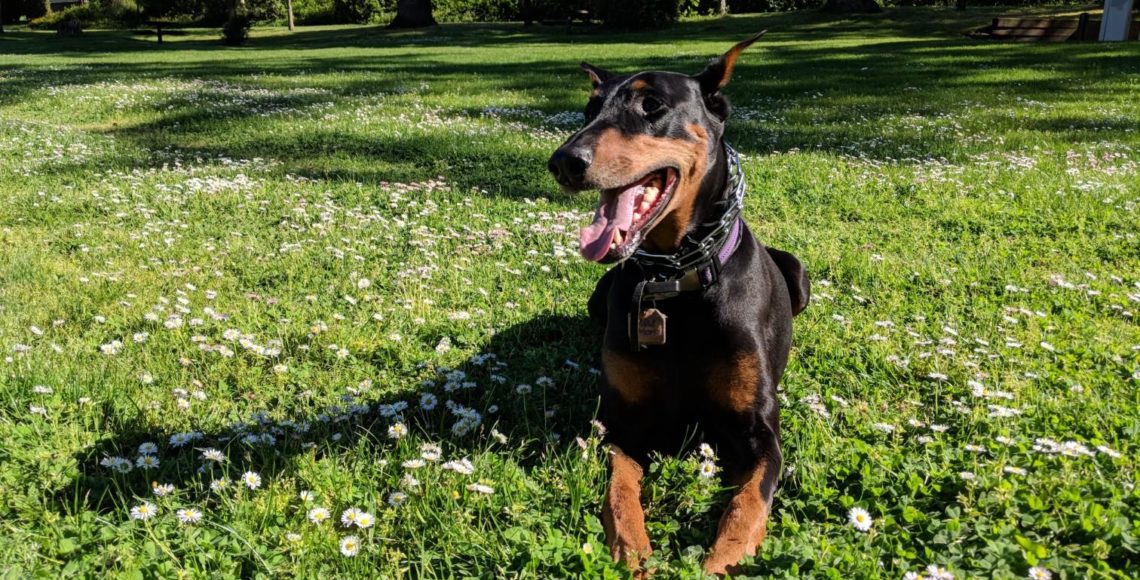All jokes aside, it’s getting hot this summer and it is important to recognize when our dogs need cooling down. We release heat all over our body so it is easy to dismiss the heat once we cool ourselves down; our dogs however can only release heat through their paws and by panting. It is important that we recognize when we need to help cool down our dogs in the summer heat.
Your dog will tell you when they are hot; the first signs of heat stress are panting and an increased thirst. Heat exhaustion strikes when your pet starts getting dizzy, weak, or unable to stand for long periods. Make sure to listen to your pet, give him water and make sure he has a shaded area with good air circulation to rest in.
Without cool air, ground, and water to cool themselves down, our pets can experience heatstroke. Once a pet gets too hot, they can lose the ability to thermo-regulate themselves and we need to intervein. Symptoms include incessant or noisy panting, collapse, inability to walk/stand and an altered mental state.
If you are concerned that your pet is too hot, take a rectal temperature (with that thermometer in your pet’s first aid kit). Our dogs and cats have a normal body temperature of 99.5-102.5 F. If your pet’s temperature is high, get then to drink water and rest in the shade. Monitor their temperature until it has returned to normal. If your pets’ temperature exceeds 104 F, contact your veterinarian immediately.
While on this topic, I would also like to debunk a popular myth about keeping our pets cool in the summer: shaving. Our dogs have coats that are designed to keep them regulated. This especially applies to our northern breeds like Huskies and Bernese Mountain Dogs. By shaving away their coat we are taking away one of their mechanisms of protection from the sun and heat. Shaving down to their skin also increases their risk of sunburn.
Yes, that’s right, sunburn! Any skin exposure on our pets (shaved or natural) is at risk of sunburn. Keep an eye on ears, noses, bellies, and areas of thin or shaved hair so you can catch it quick. For pets with light skin, white fur and areas of hair loss make sure to apply sunscreen when spending time in the sun. Dog sunscreens or non toxic baby sunscreens are your best options, however you should always read the ingredients. Zinc Oxide and para-aminobenzoic acid (PABA) are toxic to dogs and should be avoided.
If you have any questions on keeping dogs cool in the Summer heat or other summer safety, never hesitate to call your local veterinary office.
Have you seen our article on keeping you Keeping your Cats Cool in the summer?
Also check out the ASPCA Tips on hot weather safety.


Recent Comments